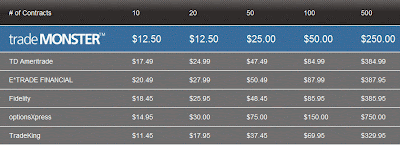Good news for everyone, particularly for those who have missed the chance to learn from the trading experts (for free) through the 4 trading educational videos I shared previously.
There is a new free trading educational video from Dan Gramza.
If you�re interested, you may want to grab this opportunity soon, so as to prevent disappointment from losing the chance to learn something to enhance your trading knowledge.
What is this video about? Here is the introduction of the video...
**************
Hello everyone, this is Dan Gramza and welcome to Gramza Market Studies Technical Tip.
Well today we're going to be talking about selling rallies. Now what does it mean when people say, "sell the rally" when you want to get into a trade? Or they sell a pull back? Or you hear things like, "The Trend Is Your Friend?"
Well we're going to explore this here in just a minute. I want to show you the technique and I want to show you some examples of how these markets behave in those settings.
I want to show you an example, but before I can talk to you too much about this example I need to define a few things for you. First candles... the approach that I use with Japanese candle charts, and that is what you're looking at here, is not the standard approach. So from my perspective, I don't focus on patterns, I focus on behavior. If we see a green candle that represents buying, that means that the closing price is higher than the open. If you see a red box that represents selling it means that the closing price is below that opening price. If you see a white line on top that's called a shadow, I think that represents selling. If you see a White line on the bottom that represents buying. Now with that in mind, the sizes of the bodies and the shadows tell us about the degree of buying or selling.
Now let's talk about this set-up here...
To get the rest of the tips, please visit this link and WATCH me!
Update as at 15 Jan 2010:
The above video is no longer available for free. Sorry if you've missed this opportunity. However, there are even more interesting videos available for FREE.
Find out more here.
There is a new free trading educational video from Dan Gramza.
If you�re interested, you may want to grab this opportunity soon, so as to prevent disappointment from losing the chance to learn something to enhance your trading knowledge.
What is this video about? Here is the introduction of the video...
**************
Hello everyone, this is Dan Gramza and welcome to Gramza Market Studies Technical Tip.
Well today we're going to be talking about selling rallies. Now what does it mean when people say, "sell the rally" when you want to get into a trade? Or they sell a pull back? Or you hear things like, "The Trend Is Your Friend?"
Well we're going to explore this here in just a minute. I want to show you the technique and I want to show you some examples of how these markets behave in those settings.
I want to show you an example, but before I can talk to you too much about this example I need to define a few things for you. First candles... the approach that I use with Japanese candle charts, and that is what you're looking at here, is not the standard approach. So from my perspective, I don't focus on patterns, I focus on behavior. If we see a green candle that represents buying, that means that the closing price is higher than the open. If you see a red box that represents selling it means that the closing price is below that opening price. If you see a white line on top that's called a shadow, I think that represents selling. If you see a White line on the bottom that represents buying. Now with that in mind, the sizes of the bodies and the shadows tell us about the degree of buying or selling.
Now let's talk about this set-up here...
To get the rest of the tips, please visit this link and WATCH me!
Update as at 15 Jan 2010:
The above video is no longer available for free. Sorry if you've missed this opportunity. However, there are even more interesting videos available for FREE.
Find out more here.
 8:10 AM
8:10 AM
 killnine
killnine






